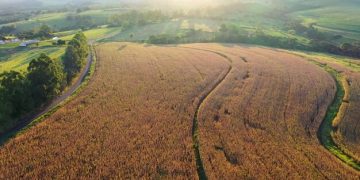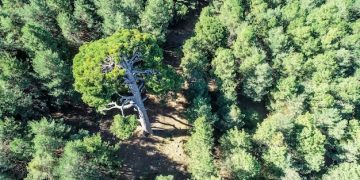Breaking Barriers: Making Environmental Education Accessible to All

Achieving universal access to environmental education necessitates innovative, inclusive strategies that transcend traditional boundaries, empowering diverse communities with the knowledge and tools for sustainable living.
In an era defined by ecological shifts and increasing climate awareness, understanding our planet’s intricate systems and the impact of human activity is no longer a niche interest but a fundamental necessity. The question of Breaking Down the Barriers: How Can We Make Environmental Education More Accessible to All? goes beyond mere academic inquiry; it touches upon the very fabric of our collective future, demanding a re-evaluation of how environmental knowledge is disseminated and internalized across diverse populations.
Beyond the Classroom: Redefining Environmental Education
Environmental education has historically been confined to formal academic settings, often perceived as a subject primarily for scientists or activists. However, to truly embrace its transformative potential, we must broaden this definition, recognizing that learning about our environment extends far beyond textbooks and lecture halls. This holistic approach posits that environmental literacy is not just about facts and figures, but about fostering a deep connection to nature and an understanding of our role within its delicate balance.
To redefine environmental education, we must consider both informal and non-formal learning environments. Informal learning, which occurs spontaneously through daily experiences, can be significantly leveraged. This includes family discussions during nature walks, community garden projects, or even local news coverage of environmental issues. These organic interactions often foster a more personal and lasting connection to the subject matter than traditional schooling alone.
Integrating Environmental Themes into Daily Life
A key pathway to accessibility involves weaving environmental themes into the fabric of everyday life and learning, rather than treating them as isolated topics. This means incorporating discussions about sustainability, resource consumption, and ecological footprints into conversations at home, in community centers, and even in casual social settings. When environmental concepts become a natural part of dialogue, they lose their intimidating academic aura and become more relatable.
- Promoting backyard biodiversity projects.
- Encouraging responsible waste management at home and work.
- Supporting local farmers and sustainable food systems.
Non-formal education platforms also play a critical role. These are structured learning opportunities outside the formal school system, such as workshops, community programs, documentaries, and museum exhibits. They offer flexibility in content, delivery, and audience, making them highly effective for reaching diverse groups who may not have access to formal education or who prefer more hands-on, experiential learning. Making these programs free or low-cost, and ensuring they are culturally relevant, vastly improves accessibility. The challenge lies in ensuring these diverse avenues collectively contribute to a cohesive and comprehensive understanding of environmental principles.
Addressing Socioeconomic Barriers to Access
Socioeconomic disparities represent one of the most significant hurdles to equitable environmental education. Communities facing economic hardship often prioritize immediate needs like food security, housing, and healthcare, understandably relegating environmental concerns to a secondary status. This reality necessitates a strategic shift in how environmental education is presented and delivered, ensuring it resonates with their lived experiences and addresses their specific challenges. It requires understanding that environmental issues are often inextricably linked to social and economic justice.
Education initiatives must demonstrate the direct relevance of environmental principles to daily lives and livelihoods. For instance, discussions about local air and water quality become far more compelling when framed as health issues impacting families, or when urban greening projects are presented as opportunities to improve local aesthetics, reduce heat island effects, and potentially create jobs. Environmental education should not be seen as an additional burden, but as a pathway to improved quality of life and economic resilience.
Bridging the Digital Divide
In an increasingly digital world, access to information is paramount. The digital divide, however, disproportionately affects low-income communities, limiting their ability to engage with online environmental resources, educational materials, and advocacy networks. Bridging this gap involves investing in public access computing facilities, providing subsidized internet access, and developing mobile-friendly educational content.
- Establishing public Wi-Fi hotspots in underserved areas.
- Distributing low-cost or free digital devices to students.
- Creating accessible, simplified online learning modules.
Furthermore, funding for environmental education programs must be equitable, ensuring that initiatives in underserved communities receive adequate resources. This includes support for culturally sensitive curricula, trained educators from within the community, and opportunities for hands-on, local projects. By investing in these areas, we can empower individuals to become active stewards of their environment, recognizing that environmental stewardship is not a luxury, but a fundamental right and a collective responsibility. It is about fostering resilience and self-sufficiency, ensuring that everyone has the opportunity to contribute to a sustainable future.
Cultivating Cultural Relevance and Inclusivity
For environmental education to truly resonate and be effectively adopted, it must move beyond a one-size-fits-all approach and embrace the diverse cultural contexts, traditional knowledge systems, and historical experiences of different communities. Ignoring these nuances can lead to alienation and a perception that environmentalism is an external, often Western, concept disconnected from local realities. Therefore, cultivating cultural relevance is not just about translation, but about genuine integration and respect.
Indigenous communities, for example, often possess centuries of ecological knowledge passed down through generations, embodying sustainable practices deeply woven into their worldview. Incorporating these traditional ecological knowledge (TEK) systems into environmental curricula enriches the learning experience for all, while simultaneously validating and empowering these communities. It demonstrates that environmental understanding is multifaceted and can be derived from various sources, not solely scientific institutions. This cross-cultural exchange fosters a more comprehensive and holistic understanding of human-nature relationships.
Tailoring Content to Local Narratives
Effective environmental education should reflect the specific environmental challenges and opportunities prevalent in a given region, and be delivered in a manner that aligns with local cultural norms and communication styles. For urban populations, this might mean focusing on urban biodiversity, public transportation, and community gardening. For agricultural communities, it could involve sustainable farming practices, water conservation, and soil health.
- Developing curricula in multiple languages.
- Collaborating with local cultural leaders and elders.
- Highlighting local environmental success stories and traditions.

Inclusivity also means addressing the specific needs of individuals with disabilities, ensuring materials are accessible in various formats (e.g., braille, large print, audio descriptions) and that physical spaces for learning are universally designed. Furthermore, creating safe and welcoming spaces for dialogue is crucial, where individuals from all backgrounds feel comfortable sharing their perspectives and asking questions, free from judgment or preconceived notions. By building bridges between diverse worldviews, we strengthen the collective capacity to face environmental challenges.
Leveraging Technology for Wider Reach
The rapid advancements in technology offer unprecedented opportunities to democratize environmental education, allowing us to transcend geographical boundaries and overcome many accessibility barriers. Digital platforms can transform traditional learning models, making knowledge more dynamic, interactive, and widely available than ever before. However, the effective application of technology requires careful consideration of its equitable distribution and appropriate pedagogical design.
Online learning platforms, from Massive Open Online Courses (MOOCs) to specialized interactive websites, can host a wealth of environmental content, ranging from introductory courses on climate change to advanced topics in conservation biology. These platforms reduce the cost and geographical constraints of traditional education, allowing individuals to learn at their own pace and convenience. The key is to ensure content is engaging, regularly updated, and designed for diverse learning styles. Gamification, virtual reality (VR), and augmented reality (AR) can create immersive educational experiences, allowing users to explore ecosystems, visualize environmental impacts, or participate in simulated conservation efforts from anywhere in the world.
Developing Accessible Digital Tools
To maximize reach, digital tools must be intentionally designed for accessibility, considering varying internet speeds, device availability, and digital literacy levels. This includes optimizing content for mobile viewing, offering offline download options, and providing clear, intuitive navigation. Furthermore, content should be available in multiple languages to cater to diverse linguistic backgrounds.
- Creating interactive apps for identifying local flora and fauna.
- Hosting webinars and online forums with environmental experts.
- Developing open-source educational software and resources.
Podcasts, YouTube channels, and social media platforms have also emerged as powerful informal learning tools. Short, engaging videos and audio segments can distill complex environmental concepts into easily digestible formats, reaching audiences who might not engage with traditional educational materials. The challenge lies in curating reliable, evidence-based content amidst a sea of misinformation. Collaboration between educators, content creators, and technology experts is essential to harness the full potential of these digital tools, ensuring that they serve as true enablers of environmental literacy for all. Technology, when thoughtfully applied, can bridge gaps and empower a global community of learners.
Fostering Experiential Learning and Community Engagement
While theoretical knowledge is fundamental, environmental education truly comes alive through direct, hands-on experiences and active community engagement. Experiential learning facilitates deeper understanding, strengthens connections to nature, and inspires action by transforming abstract concepts into tangible realities. It allows learners to apply theoretical knowledge to real-world problems, fostering critical thinking, problem-solving skills, and a sense of personal responsibility.
Field trips to local parks, nature reserves, or recycling facilities provide invaluable opportunities for observation and direct interaction with environmental processes. Community-based projects, such as urban gardening initiatives, river clean-ups, or energy conservation audits, allow individuals to actively participate in improving their local environment. These activities not only teach practical skills but also build a sense of community ownership and collective efficacy. When individuals witness the positive impact of their actions, they are more likely to internalize environmental values and become lifelong advocates.
Building Strong Partnerships
Creating robust experiential learning opportunities often requires collaboration between educational institutions, local governments, non-profit organizations, businesses, and community groups. These partnerships can provide access to resources, expertise, and volunteers, expanding the scope and impact of environmental education initiatives.
- Developing school-community gardens.
- Organizing citizen science projects (e.g., bird counts, water quality monitoring).
- Hosting public workshops on sustainable living practices.

Furthermore, it is crucial to ensure that these experiential opportunities are accessible to all, regardless of physical ability or socioeconomic status. This might involve providing transportation, offering programs at no cost, or adapting activities to accommodate diverse needs. By fostering hands-on learning and empowering communities to take direct action, environmental education moves beyond passive consumption of information, enabling active stewardship and meaningful change. Such engagement cultivates an active citizenry that is both informed and invested in the health of their planet.
Empowering Educators and Advocates
The efficacy and reach of environmental education are heavily dependent on the quality and passion of its deliverers: educators, community leaders, and advocates. Equipping these individuals with the necessary knowledge, skills, and resources is paramount to making environmental education truly accessible and impactful. Without a strong support system for those on the frontline, even the best curricula and intentions will fall short.
Professional development for teachers, both established and aspiring, is crucial. This goes beyond simply providing facts about environmental issues; it involves training in pedagogical approaches specific to environmental education, such as inquiry-based learning, place-based education, and interdisciplinary integration. Educators need to feel confident and competent in teaching these complex topics, understanding how to connect them to diverse subjects and real-world contexts. Furthermore, they need support in fostering critical thinking and problem-solving skills among their students, rather than just rote memorization of environmental facts.
Resource Creation and Dissemination
Beyond formal training, educators and advocates require continuous access to high-quality, up-to-date, and culturally sensitive resources. This includes lesson plans, teaching materials, scientific data, and examples of successful environmental initiatives. These resources should be easily discoverable and adaptable to various learning environments and age groups.
- Developing online resource hubs for environmental educators.
- Providing grants for educators to attend environmental conferences.
- Creating mentorship programs for new environmental advocates.
Empowerment also extends to community leaders and non-traditional educators. Workshops on effective communication, community organizing, and fundraising can enable these individuals to become more effective advocates for environmental literacy. Recognizing and valuing the expertise that exists within communities themselves, and providing platforms for knowledge sharing, can amplify the reach and relevance of environmental messages. Ultimately, investing in the people who deliver environmental education is an investment in the future of our planet, ensuring that the knowledge and passion for sustainability are effectively transferred and cultivated across generations.
Measuring Impact and Adapting Strategies
To ensure environmental education initiatives are truly breaking down barriers and reaching diverse audiences, a robust framework for measuring their impact and a willingness to adapt strategies based on ongoing evaluation are essential. Without systematic assessment, programs risk becoming stagnant, failing to evolve with changing environmental challenges or audience needs. Effective measurement goes beyond simply counting participants; it seeks to understand changes in knowledge, attitudes, behaviors, and ultimately, environmental outcomes.
Impact assessment should employ a mix of quantitative and qualitative methods. Quantitative data might include pre- and post-program surveys to gauge changes in environmental knowledge or self-reported behaviors, as well as tracking participation rates across different demographics. Qualitative data, gathered through interviews, focus groups, and observational studies, can provide deeper insights into how participants internalize information, what barriers they still face, and how programs could be made more meaningful. This comprehensive approach allows for a nuanced understanding of program effectiveness.
Feedback Mechanisms and Iteration
Building accessible environmental education is an iterative process. It requires establishing clear feedback mechanisms from participants, educators, and community stakeholders. This feedback should not only be collected but also actively used to refine curricula, adjust delivery methods, and ensure cultural relevance. An adaptive approach allows programs to remain dynamic and responsive.
- Conducting regular program evaluations and soliciting anonymous feedback.
- Establishing advisory boards with diverse community representation.
- Sharing lessons learned and best practices across different initiatives.
Furthermore, assessing the broader environmental impact, such as changes in community waste reduction, energy consumption, or local biodiversity, where feasible, provides the ultimate measure of success. While attributing direct causality can be complex, these broader indicators help paint a picture of collective progress. By continuously measuring, evaluating, and adapting, environmental education can maintain its relevance, maximize its reach, and ensure that its efforts translate into tangible improvements for both people and the planet, truly breaking down barriers to inclusive and effective learning.
| Key Point | Brief Description |
|---|---|
| 📚 Redefine Education | Expand beyond formal settings; integrate concepts into daily life for broader appeal. |
| 🤝 Address Socioeconomic Barriers | Connect environmental issues to daily realities and bridge digital divides. |
| 🌍 Cultivate Cultural Relevance | Incorporate traditional knowledge and tailor content to local contexts. |
| 💡 Empower Educators | Provide training and resources for effective delivery and advocacy. |
Frequently Asked Questions About Accessible Environmental Education
▼
Environmental education equips individuals with the knowledge and skills necessary to understand and address complex environmental challenges. It fosters critical thinking about sustainability, promoting responsible decision-making crucial for protecting our planet and ensuring a healthy future for all communities, regardless of background or location.
▼
Major barriers include socioeconomic disparities, limited access to technology and resources, curricula lacking cultural relevance, and insufficient training for educators. Traditional approaches often fail to address the specific needs and contexts of diverse communities, hindering widespread participation and engagement in environmental learning.
▼
Technology enables wider reach through online courses, interactive apps, virtual reality experiences, and social media. It can overcome geographical limitations and offer flexible learning formats. However, ensuring equitable access to devices and internet, and designing user-friendly content, are crucial for technology to truly democratize environmental knowledge effectively.
▼
Culturally relevant environmental education incorporates traditional ecological knowledge, local narratives, and community-specific challenges. It tailors content and delivery methods to align with diverse cultural norms and languages, ensuring that the information resonates deeply with learners and is perceived as pertinent to their lived experiences and values, fostering meaningful engagement.
▼
Absolutely. Experiential learning, such as field trips, community gardens, or citizen science projects, transforms abstract concepts into tangible realities. These activities foster deeper understanding, critical thinking, problem-solving skills, and a stronger personal connection to nature, leading to more lasting behavioral changes and a greater sense of stewardship than passive learning alone.
Conclusion
The journey to make environmental education truly accessible to all is multifaceted, challenging, yet undeniably vital. It requires moving beyond conventional boundaries, embracing cultural sensitivity, leveraging the power of technology, and fostering hands-on engagement. By understanding and dismantling the existing barriers—whether socioeconomic, cultural, or systemic—we can unlock a collective potential for informed action and sustainable living. This endeavor is not merely about transmitting facts; it’s about cultivating a global citizenry that is both knowledgeable and deeply connected to the planet, equipped to collaborate on solutions that benefit everyone. The future of our shared environment hinges on our ability to empower every individual with the understanding and motivation to contribute to a more sustainable world.





